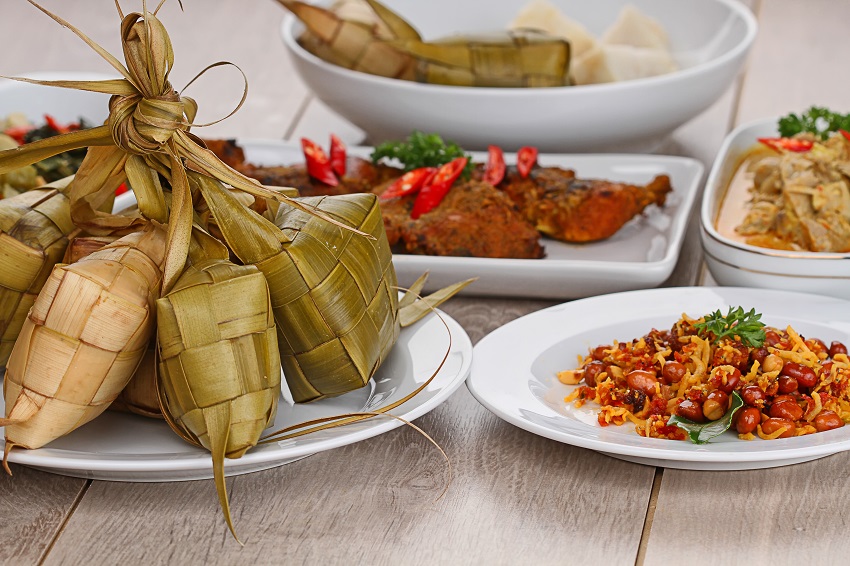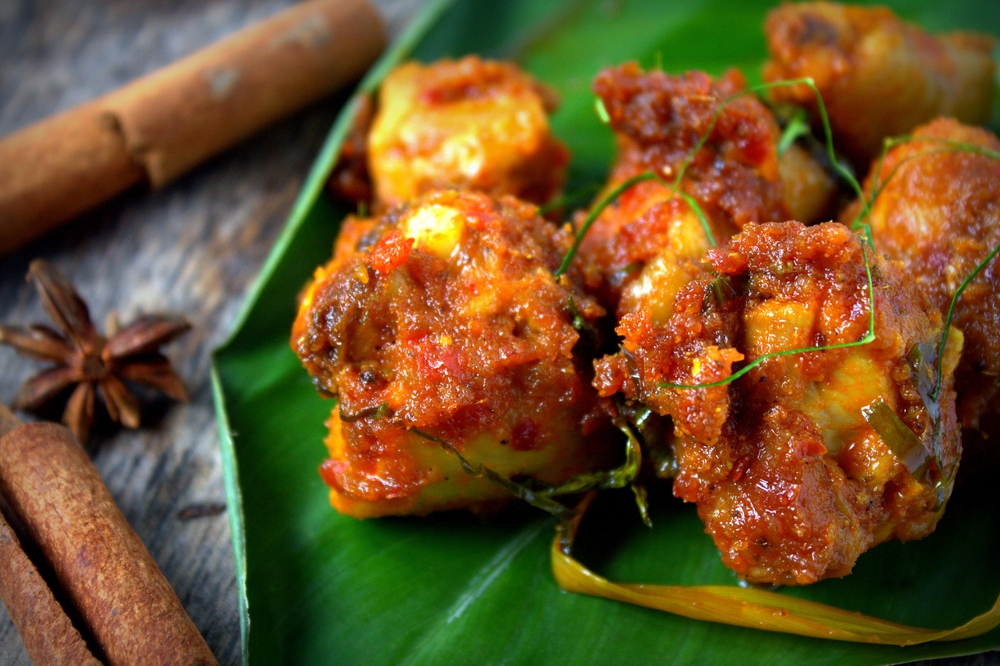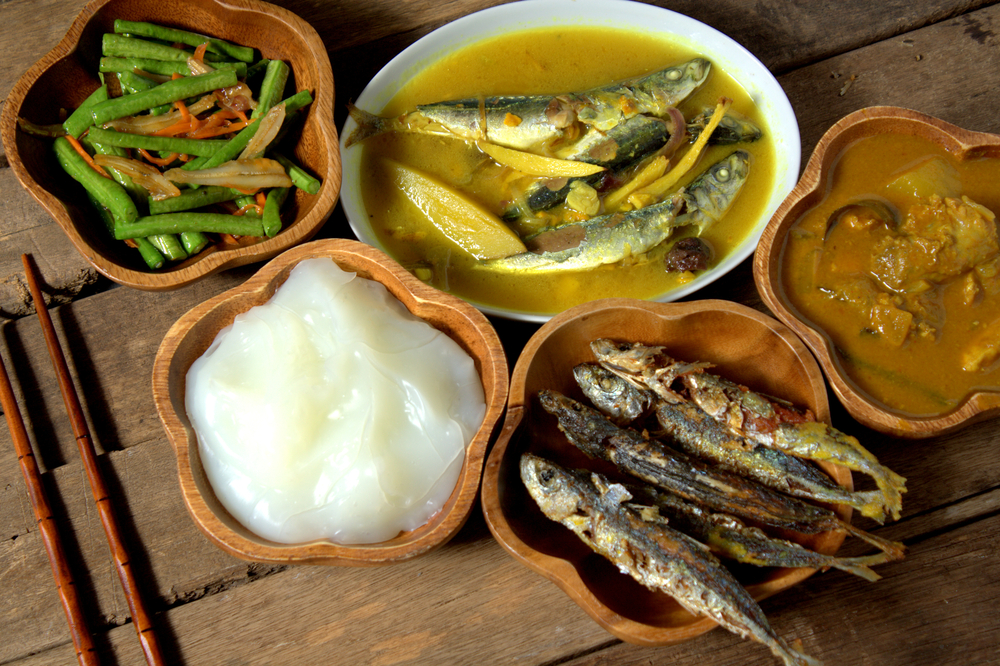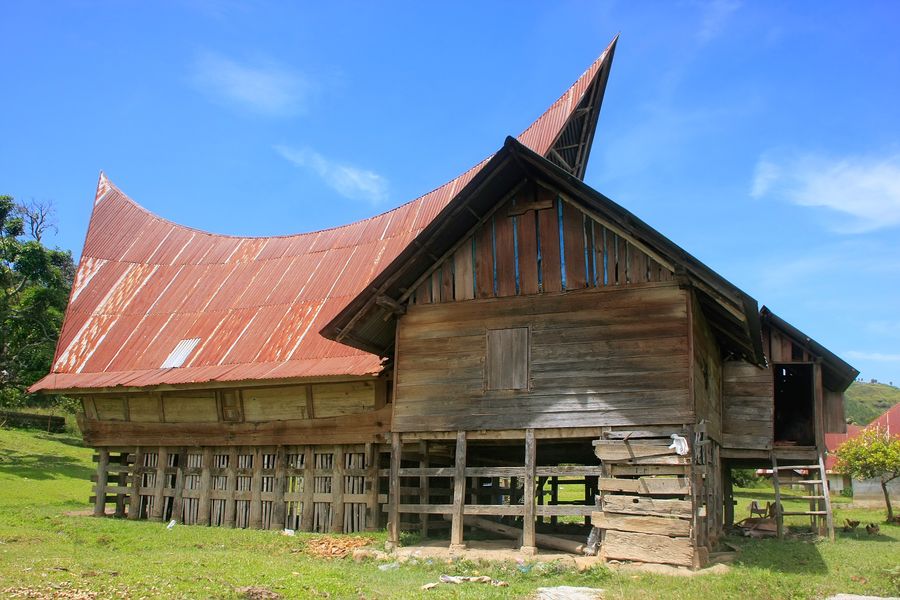Indonesia - food
Indonesia is the most populous country in Southeast Asia. Due to its archipelago topography, Indonesia has abundance of natural resources and is a home to varied ethnic groups, languages and religions. Though most food is halal serving Islamic people making 87.2% of the populations (wikipedia, 2559), other kinds of ethnic food found on islands are influenced by Chinese, Indian, Arabic and western food. Curry and Gulai, for example, are served with Roti. Janei is an Acehnese dish influenced by Indian and Arabic food. Noodles, spring rolls, Mi Goreng, Mi Ayam, Chinese noodles, Goreng, Chinese dumplings, tofu and soy sauce are all influenced by Chinese dishes. Also, the culture of tea and coffee was influenced by the western colonizers in the 18th century. (นันทนา ปรมานุศิษฏ์, 2556:69)
The native dishes on Indonesian islands are cooked from local ingredients. Minangkabau people, for instance, prefer having buffalo meat, goat meat and lamb cooked in coconut milk. This type of food is called Rendang. In Palembang, people favor Pempek or fish balls with tapioca flour. It is boiled, steamed or fried and topped with sauce. Some prefer it with Che Lor noodles, thick-cut noodles topped with coconut milk, dried shrimp, hard-boiled eggs and sauce made from pickled durian called Sambal Tempoyak. On the other hand, in eastern Java and central Java, people prefer both dried and fresh seafood. The most popular dish is Lontok Kupang which is a small seashell soup on rice that is cooked in a wrapped-in-a banana-leaf-boiling style. (นันทนา ปรมานุศิษฏ์, 2556:69)
However, Nasi or rice is a main dish for most people in Sumatra, Java and Bali. There are several types of rice in Indonesia such as white rice or Beras Puti, red rice or Beras Merah, sticky white rice or Gertan Puti and sticky black rice or Gertan Hetum. (ศิริพร โตกทองคา, ผู้แปล, 2549:69) These can be cooked as steamed rice stuffed in a coconut leaf, steamed rice stuffed in a banana leaf, rice cooked in coconut milk, rice cooked in coconut milk with turmeric and sweetened rice stuffed in a bamboo stick. (นันทนา ปรมานุศิษฏ์, 2556:69)
These are the 4 main ingredients the Indonesians prefer besides rice: coconut, banana, peanuts and soy beans. The essential seasoning includes shrimp paste or Te-rasi which is saltier than Thai shrimp paste. The Thai salty flavor comes from shrimp paste, fish sauce and salt while the Indonesians do not use fish sauce but prefer shrimp paste and soy sauce or Gerjab Asin instead. The sour flavor comes from lemon, tamarind, Kumquat, star fruit and Bilimbi. The sweet flavor comes from coconut sugar, brown sugar and sugar cane. The spiciness comes from chili introduced by the Spanish in the 16th century. Sambal, one of the chili products, is the most popular sauce among the Indonesians especially Sambal Te-rasi or shrimp paste sauce. Local ingredients such as lemongrass, shallots, parsley, ginger, galangal and turmeric are also used. (นันทนา ปรมานุศิษฏ์, 2556:70-71) Such ingredients are featured in the popular Indonesian dish like Gado Gado.
Gado Gado or Lotek is the popular Indonesian dish as a lunch meal. It is served with cooked rice wrapped in a banana leaf called Lontong Gado Gado similar to Somtum and Yum of Thailand. However, the sauce sprinkling over is like Satay sauce except Gado sauce is saltier and oil-free. The ingredients include fresh, scalded and boiled vegetables such as carrots, cabbages, bean sprouts, cow peas, young jackfruits, lettuces, tomatoes, guavas and green bean. (รายการโฮมรูม, 2557)
Gado Gao is locally different. In Surabaya, it is called Gado Gado Siram topped with sauce while Gado Gado of Bundung and Bogur is mixed with sauce. In Jakarta, cashews are used instead of peanut. (รายการโฮมรูม, 2557)
Other popular Indonesian dishes are Ketupat or Indonesian gruel, Baksi Goreng or fried noodles, Satay, Grupuk or crisp rice and Sambal Tera-si or shrimp paste. (บุหลันรมัย, 2557). In addition, Indonesian deserts, beverages and fruits are relatively popular as well. The famous one is Kue Lapis Legit or the Indonesian cake filled with smells of spices. Kue Serabi or the Indonesian pancake is a pandanus pancake topped with syrup called Kuah Kinca while another kind of pancake is a rolled pandanus pancake filled with shredded coconut and coconut sugar. Kue Lumpur or coconut cream cake tastes like coconut-caramel custard but its texture is thicker. Another interesting snack is Ampo or soil snack made from rice filed soil being stirred and molded into square shape. Then, use a bamboo stick to carve it out piece by piece. Smoke it and the finished taste should feel like cream. (uasean, 2556) Indonesian beverages are also interesting. In Bali, Arak is the most popular liquor drink made from locally brewed liquor mixed with alcohol-filled coconut. (ท้าวทอง เสียมหลอ, 2535) Other soft drinks are coconut and coke preferred both cold and room temperature. Popular fruits are durian, rambutan, banana, pineapple and passion fruit while the most wanted one is Zalacca with white texture and sweet and sour flavor. The Indonesians call it ‘Zallac’. (uasean, 2556)
Instant pastes have become popular after the economic crisis in 1997. They help save cooking time and are convenient to those wanting to try Indonesian food. Though ethnic food can be found in the ethnic towns, ethnic food restaurants in urban areas are made accessible for visitors and tourists. Sunda food famous for its healthiness, for example, is served with a lot of vegetables. (Michiko Kubo, 2553) However, foreign food restaurants such as Thai restaurant can be found as well, but it may not be widespread as food chains like KFC and McDonald’s. Varied Indonesian dishes in different areas pronounce their identity and reflect abundance of natural resources providing different local ingredients.
Bibliography
นันทนา ปรมานุศิษฏ์. (2556). โอชาอาเซียน. กรุงเทพมหานคร: มติชน.
ศิริพร โตกทองคำ แปล. (2549). อินโดนีเซีย. กรุงเทพมหานคร: สำนักพิมพ์หน้าต่างสู่โลกกว้าง.
ท้าวทอง เสียมหลอ. (2535). เซลามัต มากัน อาหารบาหลี. ศิลปวัฒนธรรม, 72-75.
uasean. (2556). ขนมและเครื่องดื่มของประเทศอินโดนีเซีย. เรียกใช้เมื่อ 29 มีนาคม 2559 จาก uasean มหานครอาเซียน: http://www.uasean.com/kerobow01/689
wikipedia. (21 กุมภาพันธ์ 2559). ประเทศอินโดนีเซีย. เรียกใช้เมื่อ 25 มีนาคม 2559 จาก วิกิพีเดียสารานุกรมเสรี: http://goo.gl/WNoGxp
บุหลันรมัย. (14 มิถุนายน 2557). อินโดนีเซียรายา . เรียกใช้เมื่อ 28 มีนาคม 2559 จาก Oknation Blog:
http://www.oknation.net/blog/bulanramai1/2014/06/18/entry-1
รายการโฮมรูม. (17 กุมภาพันธ์ 2557). รายการโฮมรูม/โอชารสอาเซียน กาโดกาโด อาหารอินโดนีเซีย. เรียกใช้เมื่อ 28 มีนาคม 2559 จาก youtube: https://www.youtube.com/watch?v=RzpfhKwdMwo
Michiko Kubo. (2553). The Development of an Iindonesian National Cuisine : A Study of New Movement
of Instant Foods and Local Cuisine. เรียกใช้เมื่อ 28 มีนาคม 2559 จาก
http://icc.fla.sophia.ac.jp/global%20food%20papers/pdf/2_7_KUBO.pdf





